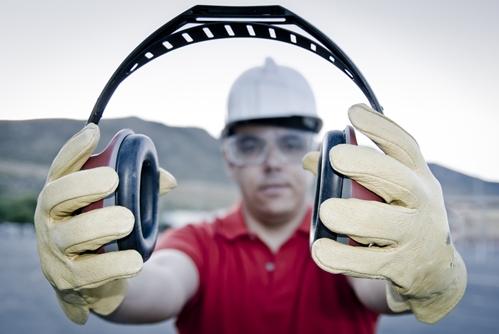
The Occupational Safety and Health Administration estimates 30 million people in the U.S are exposed to hazardous noise levels in their workplace. Despite being a highly preventable occupational health concern, hearing loss will still affect thousands of workers every year because of dangerous workplace noise levels..
Hearing loss can manifest as a temporary change in a worker’s hearing, such as ears feeling “stuffed up” or a ringing, also known as tinnitus. While short-term hearing loss can go away after a few minutes or hours, occupational noise levels can also result in long-term hearing damage that cannot be fixed with surgery or a hearing aid.
In addition to the physical and psychological stress hearing loss can cause, workers whose hearing has been damaged may experience reduced productivity or have increased difficulty with communication, which can contribute to workplace accidents and injuries. Auditory warning systems will also become less effective if worker hearing is impaired.
There are many warning signs a workplace may be too loud and impairing safety. These may include workers hearing a ringing or humming in their ears when they leave work or even temporary hearing loss. If employers or managers notice workers need to shout to be heard by a coworker who is an arm’s length away, this is another indication noise protection is needed.
Fit is essential in noise protection
While employers can utilize both administrative controls and personal protection equipment to reduce the risks of hearing loss, it’s important to maintain attention to detail when utilizing either of these methods.
As Safety + Health magazine reported, poorly fitting earplugs are a major cause of inadequate hearing protection for workers. Speaking with the magazine, Brad Witt, director of hearing conservation at Honeywell Industrial Safety in San Diego, said it’s essential that employers not only provide ear plugs but ensure those earplugs are doing their job of stopping hearing loss.
“Poorly fitting earplugs are a major cause of inadequate hearing protection.”
“The trend has definitely moved from ‘wear it’ to ‘wear it correctly’ – and then verifying that correct fit,” Witt said. “Documentation of proper fit of a hearing protector is powerful information in the hands of the employee to confirm what a good fit feels and sounds like, and also valuable information for the employer in focusing training efforts on the right people to reduce liability for hearing loss.”
OSHA requires hearing protection for any employee who has lost hearing ability or experienced a standard threshold shift, defined as loss of hearing in either ear of 10 decibels, since their last hearing test. Employers should then provide workers with a selection of at least one variety of hearing plug and one variety of hearing muff. A person trained in properly fitting hearing protectors should work with each individual employee to determine which size and type protector is most suitable for the working environment. This determination should factor in comfort as well as protection.
Employers must also have hearing protectors reevaluated whenever a change in working conditions may affect the equipment’s performance.
Proper training promotes safety
OSHA requires a hearing conservation protection program be implemented by employers in general industry whenever worker noise exposure is equal to or greater than 85 decibels for eight hours or in the construction industry when exposures exceed 90 decibels for eight hours. However, OSHA also noted that workers who understand the reasons for hearing conservation programs are more motivated to wear their protectors and take audiometric tests.
“Workers who understand the reasons for hearing conservation are more motivated to wear their protectors.”
Speaking with Safety + Health magazine, Kelly Bailey, director of safety, health and environment for Birmingham, Alabama-based Vulcan Materials Co., said employers must create a workplace culture that values hearing safety. Vulcan, which implemented audiometric testing years before the practice was required by OSHA, has been recognized nationally for its success in reducing hearing loss at its worksites.
In addition to testing, Vulcan also supplies workers with sound-level meters and encourages them to test noise levels throughout the workplace. This empowers all employees, not just safety personnel, to protect the hearing of everyone on the jobsite.
“We have hourly employees that are doing sound-level meter testing, and if they find a piece of equipment, immediately they can go after it themselves – before the safety and health guy may even know it’s happening,” Bailey explained to the magazine. “We have a lot of people contributing to reducing noise.”
It’s important for employers to remember hearing loss is a lagging indicator of a danger at the workplace. It may take years of exposure before permanent hearing loss is detected, so it’s important to be proactive in establishing hearing conservation programs.








